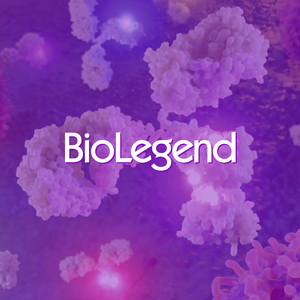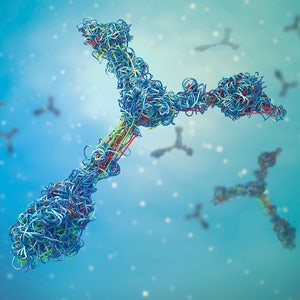Microplates
Choosing the right microplate is a critical, often overlooked, part of an assay. The right microplate helps provides valuable data, whereas the wrong microplate can lead to missed or inaccurate data leading to missed project timelines and ultimately higher costs.
New technologies for drug development are rapidly advancing. These technologies have given rise to a variety of applications that require their own unique consumables. At Revvity, we provide microplates that help you discover better. Covering a vast array of application areas, Revvity microplates are available in different well formats, plastic types, coatings, and colors – clear, white, black, gray. Our microplates have been engineered to deliver the highest quality data for applications ranging from high throughput screening to cellular imaging. Discover the difference a better microplate makes:
- Footprint dimensions meet the SBS industry standard, guaranteeing compatibility with microplate-based instrumentation
- Carefully monitored microplate planarity to ensure superb data and image acquisition
- Custom microplate services including barcoding, custom packaging, as well as plate surface coatings to fit your application
- Full range of validated reagents and instruments to complement microplates
For research use only. Not for use in diagnostic procedures.
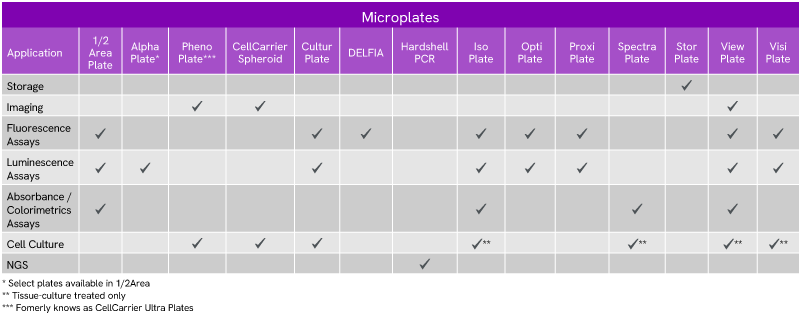


Microplates for storing reagents, biomolecules, or other samples.
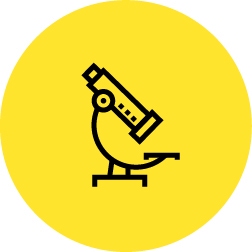
Cell imaging
Microplates for microscopy and high-content screening offering the lowest plate bottom for superior image acquisition.
Microplates for microscopy and high-content screening offering the lowest plate bottom for superior image acquisition.

Assays
Microplates for TR-FRET, HTRF, Alpha, Radiometric, luminescence, fluorescence, and others for general research.
Microplates for TR-FRET, HTRF, Alpha, Radiometric, luminescence, fluorescence, and others for general research.

Cell culture
Microplates designed to improve consistency and reliability of cell growth for general cell culture as well as 3D cell culture.
Microplates designed to improve consistency and reliability of cell growth for general cell culture as well as 3D cell culture.
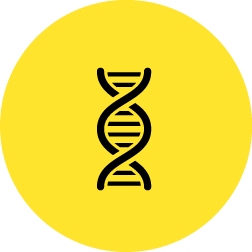
Microplates for genomic analysis used in sample preparation workflows.

Microplates for a range of high-throughput radiometric assays.


Filters
1 - 25 of 71 Resources
A comparative study of two immunoassay platforms to determine lentivirus titer for CAR-T development
The main vectors of gene therapy in research are viruses. The most popular tool for gene delivery is a genetically modified lentivirus. Modified lentivirus (HIV-1) vectors retain their ability to infect undivided cells, thereby increasing their ability to transduce a wide variety of cells, including those that are difficult to transduce. This advantage enables the stable long-term expression of a transgene. In immunotherapy, CAR-T cells are manufactured by transducing the CAR gene with an HIV-1 vector in T cells to express a specific chimeric p24 protein on their surface. This allows them to recognize cancer cells and destroy them. These CAR-T cells must be generated individually to treat each patient. This application note demonstrates a comparative quantification of the p24 titer in a lentiviral GFP control sample using Alliance HIV-1 p24 Antigen ELISA and p24 AlphaLISA immunoassay platforms. Check out the different sections of this application note: A lentiviral vector that encodes the CAR construct Determination of the efficiency of transient co-transfection by measuring viral titer Detection of the presence of a p24 HIV-1 specific antibody in the sample Quantification of targets present in the sample
A fast and simple chemiluminescent assay for monitoring of DNA-protein interactions
Electrophoretic Mobility Shift Assay (EMSA) is a standard technique used to study protein-DNA interactions. It is a radioactive assay, suitable only for low-throughput applications due to the need for a gel-based separation step. AlphaLISA ™ is a bead-based chemiluminescent technology, as a faster, simpler, and non-radioactive alternative to EMSA. AlphaLISA ™ is highly sensitive, requiring less nuclear extract compared to EMSA, highly reproducible, and suitable for higher throughput applications. Revvity developed an AlphaLISA immunoassay to monitor the presence of specific DNA-binding proteins in nuclear extracts. In this application note, we use HepG2 nuclear extracts to demonstrate the binding of Sp1 and HNF1 transcription factors to tagged oligonucleotides containing required cognate response elements. Read this note to see the results and access detailed data compared to EMSA.
Alpha Terbium SureFire Ultra Multiplex: simultaneous dual phosphoprotein target analysis
Evaluating pharmaceutical compound efficacy and safety in regulating cell behavior can involve the study of multiple signal transduction pathways and measuring more than one cellular target can provide greater confidence of positive compound hits on the cellular target of interest. Protein phosphorylation has been identified as a useful readout of cellular activation or inhibition, and these pathways are commonly targeted for therapeutic modulation of disease. Numerous assay technologies are available to look at protein phosphorylation for drug development, including the AlphaLISA ™ SureFire ® Ultra which provides a highly sensitive, fully homogenous option for the analysis of signaling pathways. This application note details the implementation of multiplexing with the AlphaLISA SureFire Ultra Multiplex assay, which offers a homogenous and high throughput approach to multiplexing.
AlphaLISA human IL-6 kit can quantify pyrogens in monocyte activation tests
Pyrogens are substances that cause fever in humans and animals. They can be endogenous or exogenous. One of the characteristics of endogenous pyrogens is their ability to induce cytokine production (IL-1ß, IL-6, IL-8, and TNFa) by the body's immune system. The detection of these pyrogens in pharmaceutical products is an essential regulatory requirement to ensure product quality and patient safety. In recent years, the Monocyte Activation Test (MAT) has become the most attractive and relevant method for humans. This method enables the detection and quantification of substances with a pyrogenic effect, i.e. those causing a febrile response, and does not require the use of animals. This application note demonstrates the usefulness of the AlphaLISA IL-6 kit for the quantification of pyrogens and the ease of use of a homogeneous, wash-free assay with low sample volumes.
Antigen-stimulated PBMC cytokine release measured by AlphaLISA bovine cytokine kits
Leptospirosis is an infectious disease caused by Leptospira bacteria, which can spread across different species of mammals. Transmission occurs through contact or consumption of food from infected domestic animals. In cattle, Leptospira infection leads to reproductive failure, affecting productivity and profitability in the dairy and beef industries. Vaccinations are widely used to prevent infection in animals and reduce transmission to humans. This application note: demonstrates the performance of AlphaLISA bovine cytokine kits by measuring the cytokine release from antigen stimulated PBMCs isolated from cow blood shows how cytokine measurements are critical for understanding cell mediated immune responses during vaccine development.
Applicability of AlphaLISA technology to a wide spectrum of complex biological samples
Alpha (Amplified Luminescent Proximity Homogeneous Assay) technology is a bead-based, no-wash alternative to traditional ELISAs. Instead of detection with an HRP substrate, the Alpha assay signal is generated by the excitation of an Eu+-coated bead that has been conjugated to the detection antibody. Alpha technology offers a simple, straight forward workflow. No wash needed! Add sample Add Acceptor bead mix; incubate 1 hr Add Donor beads; incubate 30 mins Read on Alpha-enable microplate reader Download this application note to see how no-wash AlphaLISA ™ technology provides a more-convenient alternative to ELISA for quantitation of biomarkers in complex sample types, including tissue, serum, and plasma.
Automated high-content assay using GrowDex-embedded spheroids dispensed on JANUS G3 automated liquid handling workstation
When working with 3D cell models, high heterogeneity between samples can pose a challenge - either biological or technical. In this application note, we demonstrate how a JANUS G3 liquid handling workstation can be used to improve throughput as well as assay statics by automating the liquid handling steps of 384-well, hydrogel-based high-content toxicity assay.
Avoiding biotin interference in AlphaLISA assays
AlphaLISA™ technology is a highly sensitive, easy-to-use, and reproducible method for detecting and quantifying molecules in various biological matrices. It works by using streptavidin-coated Donor beads and biotinylated anti-analyte antibodies. When these come into close proximity, the excitation of the Donor beads at 680 nM triggers an energy transfer cascade in the Acceptor beads, generating a sharp emission peak at 615 nM. However, some cell culture media contain high levels of biotin, which can interfere with AlphaLISA and other assay technologies that rely on a streptavidin-biotin binding event for detection. High levels of free biotin in the sample matrix can result in a decrease in total counts, lower signal to background ratios, and reduced AlphaLISA assay detection limits. To mitigate this, AlphaLISA biotin-free kits have been developed. This application note demonstrates the value of using AlphaLISA biotin-free kits to reduce the effects of biotin interference in sample and standard preparations.
Better microplates means better results
We know you are working hard to produce the next big breakthrough and the last thing you need to worry about is sub-par quality in something so commonly used, yet often overlooked, as a microplate.
Biochemical binding ADCC assays utilizing AlphaLISA toolbox reagents for the characterization of hIgGs and FcγR1A
Fc Gamma Receptors (FcγRs) are critical for the function of therapeutic antibodies and mediate many effector functions. Therapeutic antibody engineering programs may aim to increase the affinity for certain FcγRs while decreasing the affinity for others. Robust, transferable assays are needed to determine the binding affinity for a particular therapeutic antibody to all of the FcγRs, to generate a ‘characterization binding profile’ that can help determine a therapeutic antibody’s MOA and potential off-target effects. In this application note we demonstrate the ease with which AlphaLISA toolbox reagents can be used to develop any FcγR binding assay/ across the various stages of biologics research and development, including therapeutic screening and GMP Lot Release.
cAMP AlphaScreen assay: a method for the pharmacological characterization and screening of Gαi coupled receptors in whole cells
G protein-coupled receptors (GPCRs) are a large family of transmembrane receptors that are significant drug targets. They function as enzymes that activate G-proteins. GPCRs couple to three main families of Gα subunits: Gαi/o, Gαs, and Gαq. The coupling specificity depends on the GPCR and its cellular environment. Gαs and Gαi subunits operate through the cAMP pathway, either activating or inhibiting adenylate cyclase, which converts ATP to cAMP. In this application note, the AlphaScreen™-based cAMP detection technology has been used to study Gαi-coupled receptors, specifically the 5-hydroxytryptamine-1A (5-HT1A) serotonergic receptor. The note demonstrates the utility of the AlphaScreen-based cAMP Assay kit for the pharmacological characterization and potential high-throughput screening of Gαi-coupled receptors.
cAMP assay provides flexibility and stable pharmacology
G protein-coupled receptors (GPCRs) play a crucial role in various cellular and physiological processes, including cell proliferation, differentiation, neurotransmission, development, and apoptosis. GPCR activity is commonly assessed by measuring levels of intracellular cAMP upon stimulation by agonists. Abnormal GPCR activity is associated with many diseases, including cancer, making GPCRs an important class of pharmaceutical drug targets. Multiple assay formats have been developed to measure the level of cAMP generated, which can determine the pharmacological potency of different agonists and antagonists. The ideal assay is homogeneous, non-radioactive, and allows for sensitive and reproducible detection. AlphaScreen ™ technology provides a quantitative detection of molecules in a homogeneous, no-wash format and can be applied to GPCR research. Download this application note to learn more on the cAMP AlphaScreen assay: Detailed protocol, Data illustrated by graph and tables, Dynamic range description and validation.
Cell painting: your questions answered
With powerful potential for phenotypic drug discovery, cell painting is being rapidly adopted by leading scientists across the globe. However, implementing cell painting assays can present some challenges. To help you avoid some of the common pitfalls, we’ve collated answers from our experts to the top questions that we’ve been hearing from scientists and researchers. You will learn: How to choose the cell model What to look for in labelling reagents Key considerations for image acquisition Recommendations for image analysis Data analysis approaches
Characterizing chemokine receptor inhibitors with AlphaLISA SureFire Ultra, Alpha SureFire Ultra Multiplex and LANCE Ultra cAMP assays
The measurement of protein phosphorylation is a useful tool for measuring the modulation of receptor activation by both antibodies and small molecules. CCR7 and CXCR2 receptors, which are expressed in immune cells and are therapeutic targets for disorders like lupus erythematosus, adult leukemia, lymphomas, chronic obstructive pulmonary disease (COPD), and sepsis. AlphaLISA ™ SureFire ® Ultra ™ and Alpha SureFire ® Ultra ™ Multiplex assays are automation-friendly, applicable to both small and large-scale screens, and can assess phosphorylation status in complex matrices. The LANCE Ultra cAMP assay is measures cyclic AMP (cAMP) produced upon modulation of adenylyl cyclase activity by G-protein coupled receptors (GPCRs). This application note demonstrates how the SureFire Ultra and LANCE Ultra cAMP assays can be used for measuring inhibitors to CCR7 and CXCR2 cell surface receptors using a cellular model system where these receptors are overexpressed in CHO cells. The assays were optimized to measure receptor blockage and assayed receptor activity modulation by detecting ERK and AKT phosphorylation status and cAMP modulation. For more details, download the application note!
Comparison of EMT Biomarker Expression in 2D Monolayer and 3D Spheroid Cultures in a Prostate Cancer
AlphaLISA and LANCE (TR-FRET) biomarker assays can be used to measure ECM-associated protein modulation caused by human transforming growth factor-beta (TGF-β) induction of EMT in a 3D Spheroid model of human prostate carcinoma.
Complementary platforms that enable multiparametric characterization of AAV capsids
Over time, Adeno-associated virus (AAV) vectors have become the leading platform for gene delivery in the potential treatment of a variety of human diseases. Researchers and bioanalytical scientists within the gene therapy community have focused on characterizing various AAV serotypes using conventional and next-generation technologies to deliver critical quality attributes along their workflow. In this application note, discover how AlphaLISA ™ and LabChip ® GXII Touch ™ microfluidics-based CE technology can be used as orthogonal methodologies to detect and characterize AAV8 serotype capsid proteins.
Compound inhibitor profiling using the FlexDrop Plus Non-Contact Dispenser.
The ADP-Glo™ Kinase Assay : a powerful tool for drug discovery The ADP-Glo™ Kinase Assay is a crucial tool in drug discovery research. It measures the activity of kinases, essential enzymes involved in cellular signaling. By quantifying the amount of ADP produced during kinase reactions, the assay helps identify potential drug candidates that can inhibit kinase activity and treat diseases like cancer and inflammation. Experimental Overview The study involved comparing the FlexDrop™ Plus to other liquid handling methods, including a multichannel pipette and a pipetting station. Experiments were conducted using different enzymes and compounds to assess the FlexDrop Plus's performance in various aspects of the ADP-Glo™ Kinase Assay, such as compound dilution, reagent addition, and overall assay execution. The FlexDrop Plus Non-Contact Dispenser: A Game-Changer The FlexDrop Plus has the potential to revolutionize the compound inhibitor profiling process. By automating key steps and improving efficiency, it can accelerate drug discovery efforts and reduce costs. This study provides valuable insights into the capabilities of the FlexDrop Plus and its potential to enhance the ADP-Glo™ Kinase Assay. To learn more about the FlexDrop Plus and its potential to streamline your compound inhibitor profiling workflows, we invite you to explore the complete document and review the detailed results. For research use only. Not for use in diagnostic procedures.
DELFIA Assays: Flexible and Sensitive Tools for Monoclonal Antibody Development
DELFIA® immunoassays are particularly well suited for discovery of specific, high-affinity monoclonal antibodies (mAbs), especially at the low concentrations that may be present in hybridoma supernatants. An assay used in these conditions must be sensitive, specific, reliable, reproducible and easy enough to handle 1,000 to 1,500 samples in one batch.
Detection of MAPK activation to evaluate the efficacy and potency of KRAS/SOS1 inhibitors by AlphaLISA and HTRF technologies
Evaluation of the therapeutic profile of anti-oncogene compounds in various cell lines with AlphaLISA™ and HTRF™ KRAS is a proto-oncogene known to be mutated in many cancer subtypes, inducing uncontrolled proliferation and cell metabolism changes. Like most small GTPases, KRAS will bind to GDP in its inactive form or to GTP in its active form. KRAS G12C is one of the most commonly found mutant forms in cancers, and leads to a permanently active state of KRAS. The upregulation of KRAS interaction with the exchange factor SOS1 leads to cancer phenotypes. Reducing KRAS activity and associated pathways could control the biological processes involved in cancer growth. Furthermore, it is well known that KRAS induces activation of mitogen-activated protein kinase (MAPK), thus playing a central role in human cancers. This application note provides a convincing demonstration of the reliability of the AlphaLISA and HTRF KRAS portfolios to evaluate compound in vitro therapeutic profiles in a cellular context: Determine the effects of KRAS and SOS1 inhibitors in different human cancer cell lines Discriminate the cellular action of KRAS-targeting compounds and evaluate their effectiveness in modulating KRAS downstream pathways.
Developing a high throughput AlphaLISA assay for screening activity of biologics produced by engineered probiotic microbes
Due to limitations driven by circulatory half-life and drug target bioavailability, injected biologics often require the injection of high doses, which can result in patient discomfort, unwanted side effects, a limited therapeutic window, and higher costs. To sidestep these pain points, Tenza has engineered probiotic microbes to synthesize and deliver protein therapeutics directly to the target tissue. The functional activity of the secreted protein biologic is assessed by its binding to a target protein relevant to its therapeutic indication. The pre-existing assay format for testing functional activity was a standard ELISA, which had limited dynamic range and throughput, required large sample volumes, and involved multiple tedious wash steps. Download this application note and discover how the authors switched to a custom developed AlphaLISA ® assay to overcome the limitations they had observed in the use of their ELISA assays.
Development of pharmacokinetic (PK) assays for detecting biosimilars targeting TNF alpha using AlphaLISA
Anti-inflammatory monoclonal antibody drugs that specifically target TNF alpha such as Humira, have been highly successful in the market. As patents expire on these top-selling drugs, effort has been placed on developing biosimilars. Biosimilars differ from small molecule generic drugs in that their chemical structure does not have to be exactly the same as the patented drug. Therefore, the FDA has stringent requirements for proving that the biosimilars have the same efficacy and safety profile as the patented drug. Companies that develop biosimilars are tasked with proving that the biosimilar shows equivalent pharmacokinetics as the patented drug. Proving “biosimilarity” involves comparing parameters such as overall exposure, absorption, half-life, and clearance time using patient samples. Sensitive, robust, and fast assays are needed to measure these parameters. Traditional methods for detecting and quantifying these drugs in patient samples include time-consuming, wash-based ELISA and MSD methods. In contrast, AlphaLISA allows for fast, no-wash, high-throughput detection and quantification of the drug of interest in a variety of sample matrices. Here, we demonstrate the application of AlphaLISA for detecting biosimilars targeting TNF alpha.
Dual NIR imaging of β-Amyloid plaques and Tau tangles provides potential insights into Alzheimer’s disease
Dr. Mengchao Cui, from Key Laboratory of Radiopharmaceuticals, Ministry of Education, College of Chemistry, Beijing Normal University, Beijing, and his colleagues have been exploring the use of a dual-imaging approach for NIR probes in early non-invasive diagnosis of Alzheimer’s disease (AD). Read the whitepaper to learn more.
Enhance PROTAC Drug Discovery with AlphaLISA and HTRF Kits
A Bruton Tyrosine Kinase (BTK) case study PROteolysis Targeting Chimeras (PROTACs) are one of the latest trending tools used in drug discovery. This note compiles experiments carried out to characterize PROTAC compounds using Bruton Tyrosine Kinase (BTK) as a model on Ramos cells. Both AlphaLISA and HTRF technologies were used in biochemical and cell-based contexts. Featured in this note: Assay principle and workflow Consistent results (data and graphs) Informative materials and methods, including references
Evaluating the specificity of PD-1 and PD-L1 blocking antibodies using AlphaLISA human and mouse PD-1/PD-L1 binding kits
Mouse pharmacological models continue to play a large role in the study of human disease, and mouse tool reagents have shown high utility in immunology and cancer research for decades. It can often be quicker to learn about immunology and the regulation of immune responses using a syngeneic mouse model. However, working in mouse systems can often require the development of separate mouse reagents, if the therapeutic agent of interest does not cross-react with mouse. Find out how the AlphaLISA™ human PD-1/PD-L1 and AlphaLISA mouse PD-1/PD-L1 binding assays provide a fast, powerful, homogeneous platform for obtain binding potencies from potential novel drug candidates.
Questions?
We're here to help.
Contact us Revvity is a trademark of Revvity, Inc. All other trademarks are the property of their respective owners.


